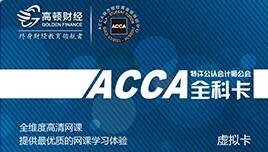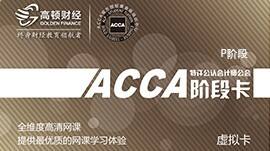2012年12月ACCA考试F5考试考官报告
每次考试结束ACCA考官都会根据本次考试考生的总体表现情况写报告,具体分析学生在答题过程中出现的问题,总结学生在备考该科目时应该注意的事项,以下是2012年12月F5考官报告:
General Comments
The examination consisted of five compulsory questions worth 20 marks each. The vast majority of candidates attempted all five questions, and there was little evidence of time pressure. Where questions were left unanswered by candidates, this appeared to be due to a lack of knowledge or poor exam technique, as opposed to time pressure, although occasionally a candidate would state that they had run out of time.
Many candidates started with question 5 this sitting. This was the question on activity-based costing and was overall one of the better answered questions on the paper, particularly parts (a) and (b), the numerical parts of the question. Question 1 on cost-volume-profit analysis was often left until last, and the lower quality of the answers suggested that this was because of a lack of knowledge of this area of the syllabus. Generally speaking, candidates performed well on questions 2a, 3, and 5a and (b). The questions candidates found most challenging were the whole of question 1, 2b and c, the whole of question 4 and 5c. This is mainly due to candidates not understanding core syllabus areas well enough; a lack of technical knowledge and also due to a failure to read question requirements carefully. Question 1 was newer to the syllabus than the other topics examined but there was an article on this in the student accountant which should have helped in answering this question.
A number of common issues arose in candidate’s answers: Failing to read the question requirement clearly and therefore providing irrelevant answers which scored few if any marks. Poor time management between questions; some candidates wrote far too much for some questions and this put them under time pressure to finish remaining questions. Not learning lessons from earlier examiner’s reports and hence making the same mistakes. Illegible handwriting and poor layout of answers. The handwriting in candidate’s answers is sometimes so bad that no marks can be awarded at all because it is simply not possible to read it.
Specific Comments
Question One
Part (a) of this question required candidates to calculate the weighted average contribution to sales ratio for Hair Co. Using the most simple approach for this, firstly then, it was necessary to calculate the individual contribution for each of the products. From this, the total contribution could be calculated by applying the sales volumes to the unit contributions. Then, the total sales figure could be calculated, finishing with the calculation of the ratio by dividing the first figure by the second. The majority of candidates were able to calculate the unit contributions, which is obviously a very basic F2 skill. However, many students seemed unclear where to go from here. The most common error was that candidates then simply added together the three unit contributions, added together the three unit selling prices, and divided the former by the latter, giving a contribution to sales ratio of 36.9%. The problem with this calculation is that it does not take into account the relative sales volume of each product and it is not therefore a weighted average contribution to sales ratio but rather just an average contribution to sales ratio.
Part (b) asked candidates to calculate the break-even sales ratio for the company. This is a very simple calculation and was answered correctly by about half of candidates. Follow-on marks were given for using the ratio calculated in part a, even if this ratio was incorrect. All that needed to be done to calculate the break-even sales revenue was for the fixed costs of $640,000 to be divided by the ratio. There is a far more complicated method of performing this calculation but it takes a ridiculously long time to perform and I’m not sure why anyone would use it when there is such a simple way to calculate the required figure. Some candidates did attempt to use it though, but it is not to be recommended, given the length of time it takes and the complexity of the calculation itself. Hence, I am not going to describe it here.

相关阅读
ACCA考试中的F3考试学习技巧2013/08/07
ACCA考试中的F1考试学习技巧2013/08/07
2012年12月ACCA考试F4考试考官报告2013/06/19

















